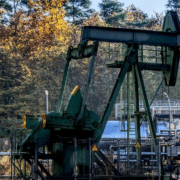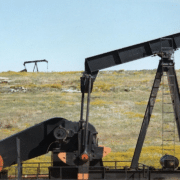The information provided on this page is for general informational purposes only and does not constitute legal, financial, or investment advice. Oil and gas laws, mineral rights regulations, and royalty structures vary significantly by state and jurisdiction. While we strive to provide accurate and up-to-date information, no guarantee is made to that effect, and laws may have changed since publication.
You should consult with a licensed attorney specializing in oil and gas law in your jurisdiction, a qualified financial advisor, or other appropriate professionals before making any decisions based on this material. Neither the author nor the publisher assumes any liability for actions taken in reliance upon the information contained herein.
Mineral rights leases with oil and gas companies can be a highly profitable venture for earning oil and gas royalties. Unfortunately, the high stakes industry has a lot of players, some of which do not like to play by the rules.
If you feel as if a company has violated your oil and gas lease agreement, you may be entitled to compensation in the court of law. In this article, we are going to cover some of the most common oil and gas lease violations and what to do if you find yourself in an agreement that has not been upheld.
Improper Royalty Calculations
One of the most common disputes between oil companies and mineral rights owners are over incorrect royalty payments. Cases like this are vigorously defended in court and are only awarded to lessors who can provide sufficient evidence that their royalty payments were miscalculated. In order to prove this, mineral rights owners should have copies of their lease and the company’s division of interest in order to outline their fair share of royalty sales.
Failure to Reasonably Develop the Land
In most oil and gas agreements, there are “implied covenants” such as a lessee’s requirement to reasonably develop the land for mineral extraction. For example, let’s say a mineral rights owner agrees to have an oil and gas company explore and extract oil on 400 acres of land. The lessee then drills one well that drains 50 acres of land and ceases production for the next 5 years.
In this case, the oil company has failed to reasonably attempt to develop all of the predetermined land in the agreement. As the mineral rights owners, this allows you to claim the oil and gas company acted unreasonably, which may lead to compensation if taken to trial.
Missing or Wrongly Assigned Royalties
Whereas most mineral rights owners work well with oil and gas company agreements, what happens when the lessor passes away? Some of the most common disputes in mineral rights leases actually come from supposed heirs of oil royalties.
If you have inherited or have been gifted active mineral rights, then you may need to get in contact with the lessee to confirm you are receiving the appropriate mineral royalties. Failure for an oil company to correctly reassign royalty shares can result in a lawsuit, if it is outlined in the lease agreement.










